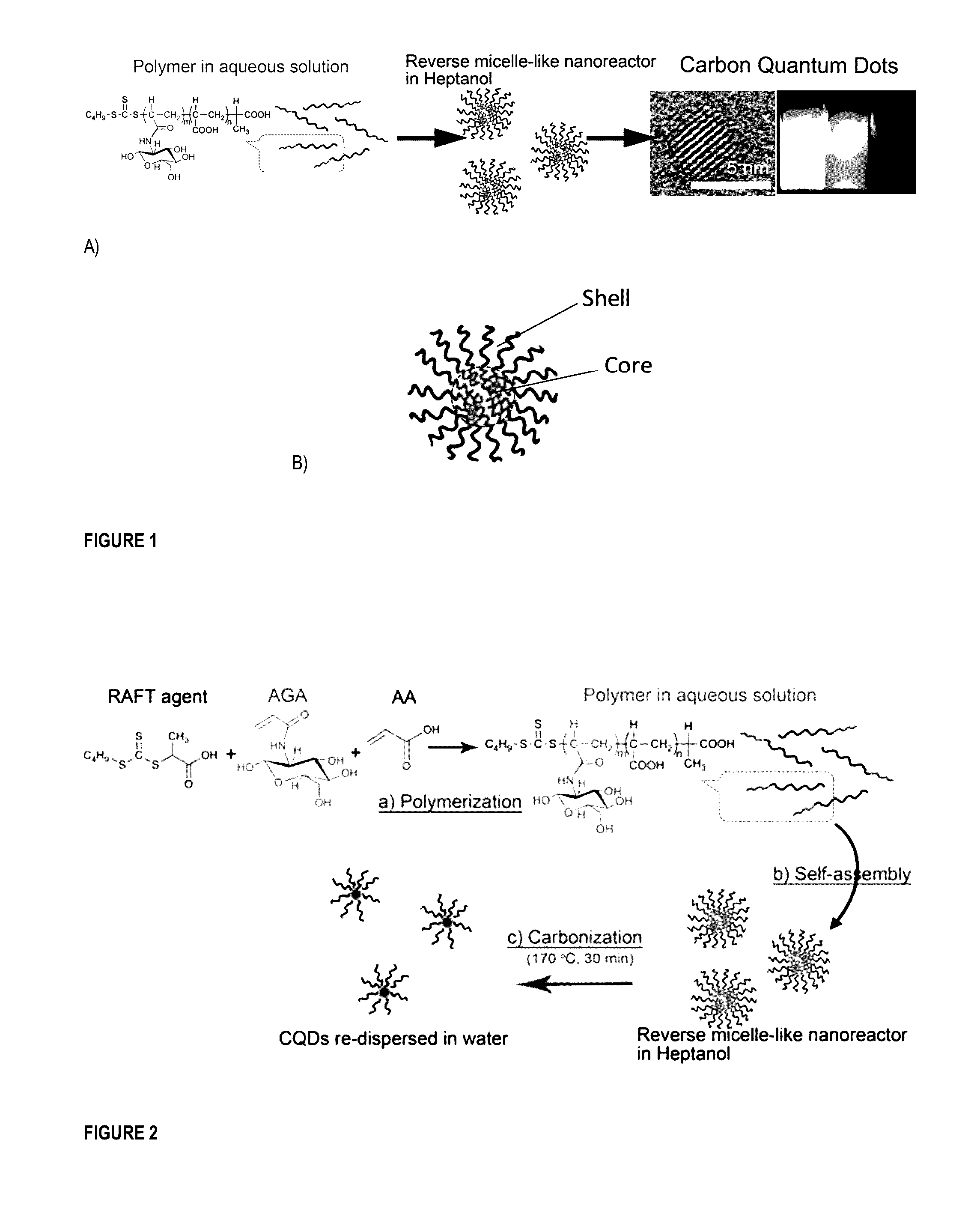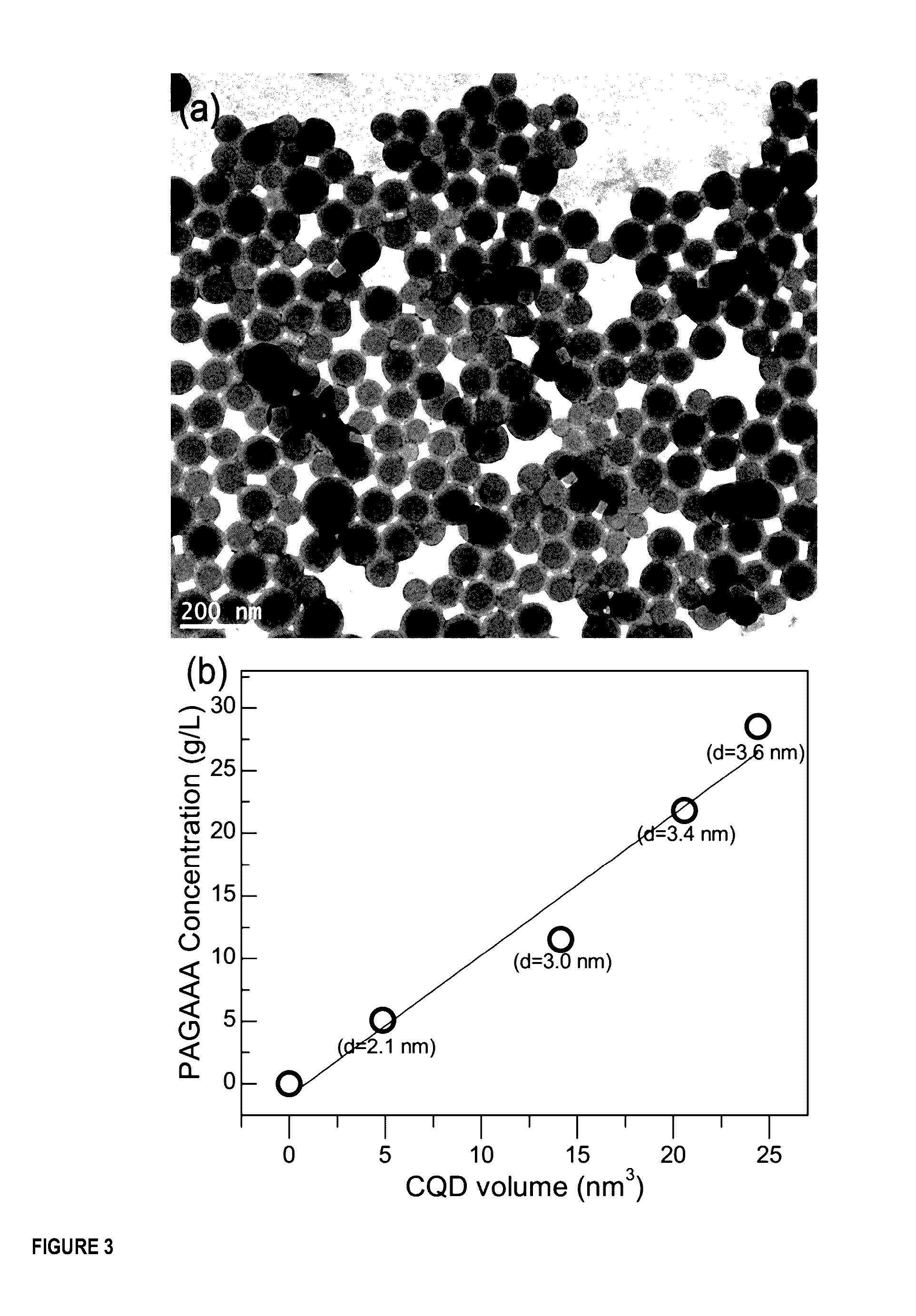Method for manufacturing carbon quantum dots
a manufacturing method and quantum dots technology, applied in the field of manufacturing carbon quantum dots, can solve the problems of limiting the practical application of cqds, intrinsic limitations precluding the preparation of cqds on a large scale, and cqds synthesized by the most popular hydrothermal approach usually require a time-consuming and hardly scalable purification process
- Summary
- Abstract
- Description
- Claims
- Application Information
AI Technical Summary
Benefits of technology
Problems solved by technology
Method used
Image
Examples
example 1
[0160]We report below an efficient approach to synthesize high-quality dispersible CQDs using self-assembled polymeric nanoparticles.
[0161]More specifically, copolymers based on N-acryloyl-D-glucosamine and acrylic acid prepared by Reversible Addition-Fragmentation chain Transfer (RAFT) polymerization were self-assembled into polymeric nanoparticles (herein also called nanoreactors). After a facile graphitization process (170 00, atmospheric pressure), each resulting CQD was a 1:1 copy of the nanoreactor template. The high-quality CQDs (quantum yield≈22%) with tunable sizes (2-5 nm) were decorated by carboxylic acid moieties and could be spontaneously re-dispersed in water and polar organic solvents.
[0162]To demonstrate the versatility of this approach, CQDs hybridized TiO2 nanoparticles with enhanced photocatalytic activity under visible-light have been prepared.
Synthesis of the CQDs
[0163]Our templating approach is based on the use of self-assembled polymeric nanoparticles which ar...
PUM
| Property | Measurement | Unit |
|---|---|---|
| size | aaaaa | aaaaa |
| temperature | aaaaa | aaaaa |
| concentration | aaaaa | aaaaa |
Abstract
Description
Claims
Application Information
 Login to View More
Login to View More - R&D
- Intellectual Property
- Life Sciences
- Materials
- Tech Scout
- Unparalleled Data Quality
- Higher Quality Content
- 60% Fewer Hallucinations
Browse by: Latest US Patents, China's latest patents, Technical Efficacy Thesaurus, Application Domain, Technology Topic, Popular Technical Reports.
© 2025 PatSnap. All rights reserved.Legal|Privacy policy|Modern Slavery Act Transparency Statement|Sitemap|About US| Contact US: help@patsnap.com



